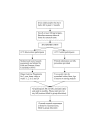Falls Assessment Clinical Trial (FACT): design, interventions, recruitment strategies and participant characteristics
- PMID: 17662156
- PMCID: PMC1978207
- DOI: 10.1186/1471-2458-7-185
Falls Assessment Clinical Trial (FACT): design, interventions, recruitment strategies and participant characteristics
Abstract
Background: Guidelines recommend multifactorial intervention programmes to prevent falls in older adults but there are few randomised controlled trials in a real life health care setting. We describe the rationale, intervention, study design, recruitment strategies and baseline characteristics of participants in a randomised controlled trial of a multifactorial falls prevention programme in primary health care.
Methods: Participants are patients from 19 primary care practices in Hutt Valley, New Zealand aged 75 years and over who have fallen in the past year and live independently. Two recruitment strategies were used - waiting room screening and practice mail-out. Intervention participants receive a community based nurse assessment of falls and fracture risk factors, home hazards, referral to appropriate community interventions, and strength and balance exercise programme. Control participants receive usual care and social visits. Outcome measures include number of falls and injuries over 12 months, balance, strength, falls efficacy, activities of daily living, quality of life, and physical activity levels.
Results: 312 participants were recruited (69% women). Of those who had fallen, 58% of people screened in the practice waiting rooms and 40% when screened by practice letter were willing to participate. Characteristics of participants recruited using the two methods are similar (p > 0.05). Mean age of all participants was 81 years (SD 5). On average participants have 7 medical conditions, take 5.5 medications (29% on psychotropics) with a median of 2 falls (interquartile range 1, 3) in the previous year.
Conclusion: The two recruitment strategies and the community based intervention delivery were feasible and successful, identifying a high risk group with multiple falls. Recruitment in the waiting room gave higher response rates but was less efficient than practice mail-out. Testing the effectiveness of an evidence based intervention in a 'real life' setting is important.
Figures
References
-
- Fielden J, Purdie G, Horne G, Devane P. Hip fracture incidence in New Zealand, revisited. N Z Med J. 2001;114:154–156. - PubMed
Publication types
MeSH terms
LinkOut - more resources
Full Text Sources
Medical
Miscellaneous



